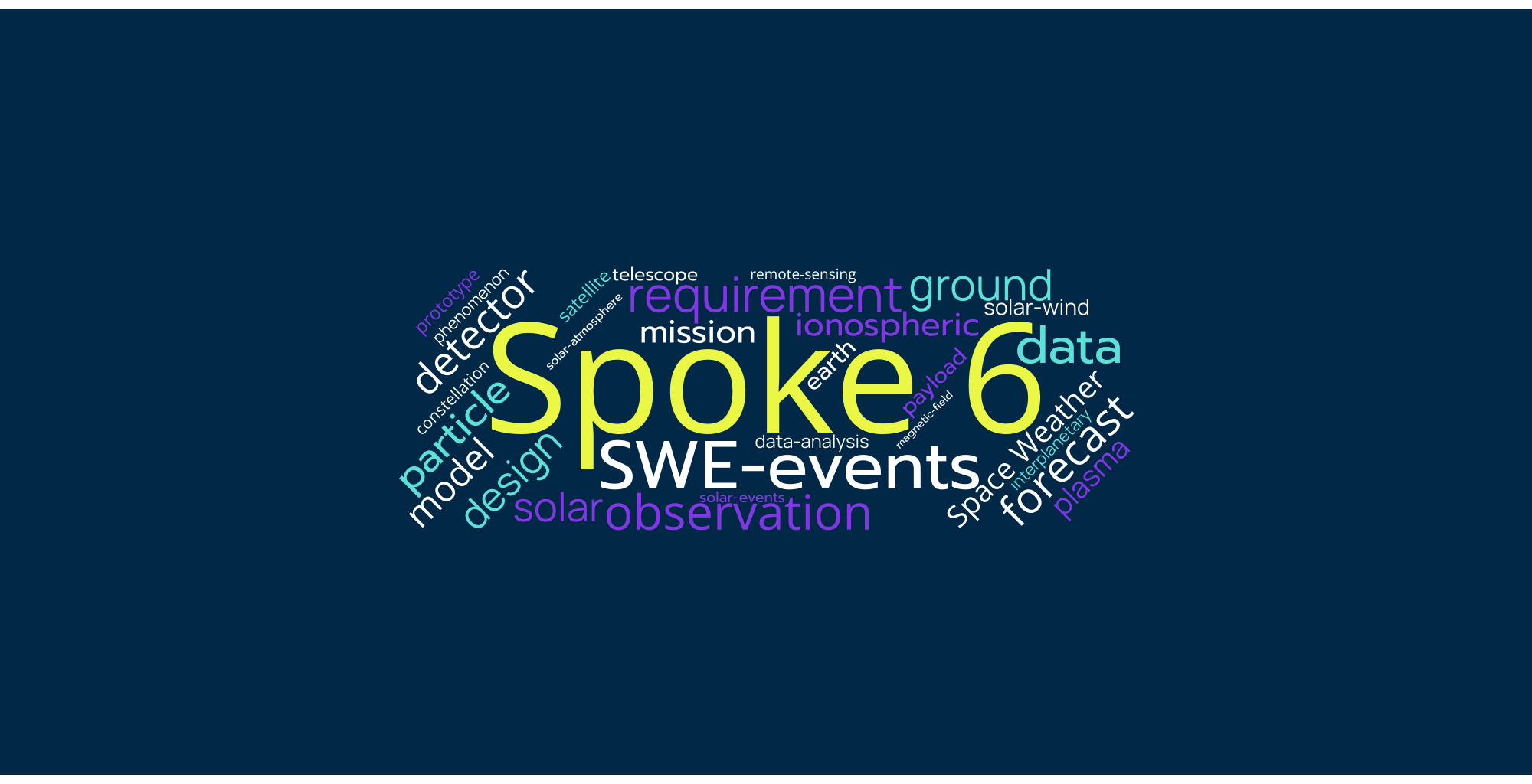Spoke 6 activities overview
Spoke 6 - Protection of critical infrastructures and Space Weather
Spoke 6 develops the scientific knowledge, technologies and operational tools required to monitor, forecast and mitigate Space Weather (SWE) events. Its activities cover the entire physical chain from the Sun to the Earth, combining theoretical modelling, data analysis, mission design, innovative payload development and experimental prototyping for future space missions and operational networks.
A central component concerns the study of the regions where SWE events originate. Activities include the modelling and data analysis of physical processes in the solar atmosphere, the characterization of magnetically active regions, and the exploitation of observations from major space missions and ground-based telescopes. In parallel, the Spoke investigates the behaviour of the solar wind and interplanetary plasma during disturbed conditions, using high-resolution data from Solar Orbiter and the Parker Solar Probe, as well as extensive numerical simulations. Another line focuses on the particle radiation environment, combining ground-based neutron monitor observations with space-borne instruments to study the solar, terrestrial and galactic components of cosmic rays.
Alongside the investigation of SWE sources, the Spoke analyses the effects of solar disturbances on the magnetosphere–ionosphere–thermosphere system. This includes the study of magnetic reconnection, plasma instabilities, ionospheric turbulence and geomagnetic signatures during SWE events. Data from space and ground sensors are used to assess impacts on orbital assets and GNSS services, and to develop a semi-empirical model capable of reconstructing ionospheric and thermospheric variability under adverse conditions.
The scientific knowledge produced feeds into the design of innovative space architectures for SWE monitoring. Work includes defining the requirements for CubeSat platforms and constellations, conducting trade-off analyses of innovative SWE payloads, and studying orbits and mission profiles for multipoint observations. In this framework, the Spoke develops breadboards of particle sensors based on scintillators and silicon detectors, assessing their scalability and technology readiness in synergy with other Spokes.
The Spoke also advances forecasting and nowcasting capabilities for SWE events. It develops and optimises procedures to identify precursors of flares, coronal mass ejections and solar energetic particles. Additional activities address real-time modelling of geomagnetic and ionospheric conditions and the automation of existing observational assets, enabling their integration into a future operational SWE alert network. The analysis of ground and space data further supports the assessment of potential impacts on critical services and space infrastructures.
Finally, Spoke 6 conducts experimental activities dedicated to advancing SWE instrumentation for future missions. These include the development and testing of breadboards for compact coronagraphs and UV polarimeters designed for small platforms and multipoint missions, and the definition of requirements for a continuously operating SWE forecasting network. The Spoke also develops prototypes of robotic telescopes for synoptic solar observations and supports the creation of experimental infrastructures for instrument validation and qualification.
Keyword Cloud of Spoke Activities




